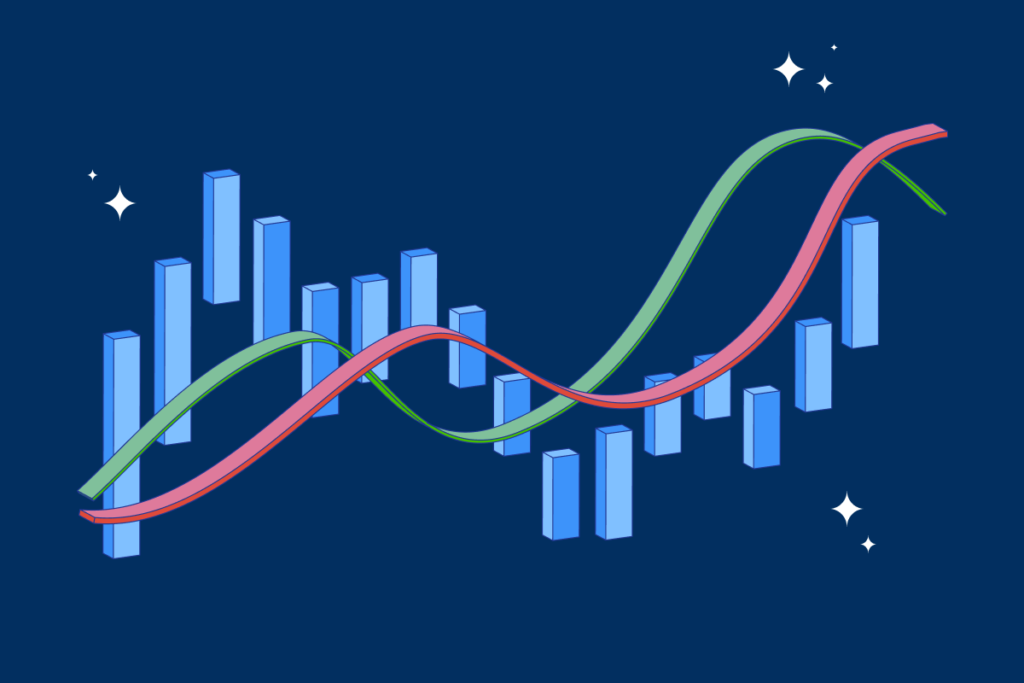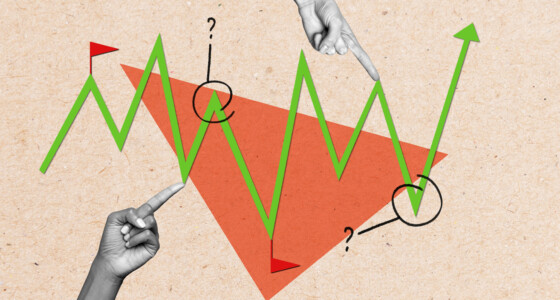

Constantly surrounded by trends, both obvious and subtle, it becomes important to have the necessary knowledge to identify and navigate them. One interesting market trend that gained popularity in recent years is the increased demand for vintage and retro video games and consoles. Who would’ve guessed that the Nintendo Entertainment System would still be so sought-after? The box alone goes for $200.
As for other intriguing and more subtle types of trends, there are powerful tools to spot them. Among these tools, technical analysis plays a significant role. And it’s crucial for every trader, including fixed time traders, to have a good understanding of these techniques and use them in trading activities.
Key principles and assumptions of technical analysis

In trading analysis, these principles form the basis for understanding price movements and developing trading strategies:
- A key assumption of technical analysis is that historical price patterns tend to repeat in the future. Traders analyze past price data to identify recurring patterns and chart formations that may indicate future price movements.
- Technical analysis assumes that the price of an asset already incorporates all relevant information, including market factors, investor sentiment, and economic indicators. Traders believe that studying price patterns may reveal market behavior.
- Traders recognize that markets exhibit trends, whether they are upward (bullish), downward (bearish), or sideways. And so they try to capitalize on these trends through the use of various chart patterns and indicators.
Common technical analysis tools used in FTT
Here are the key FTT technical tools and their role in navigating the complexities of the market:
Trendlines and channels
These are made of straight lines on a price chart that connect a series of higher lows or lower highs. They help traders determine the overall market sentiment, support and resistance levels, and assist in making predictions about future price movements.
Support and resistance levels
These levels act as barriers, either preventing prices from falling further (support) or rising higher (resistance). They provide valuable insights into potential entry and exit points.
Moving averages
Moving averages (MAs) represent the average prices of an asset over a specific time period. They smooth out price fluctuations and help traders identify the overall trend direction, as well as generate trading signals.
Oscillators and momentum indicators
These gauge the strength and speed of price movements, pointing out overbought and oversold conditions, as well as trend reversals. FTT traders use them for entry and exit points.
How to recognize uptrends, downtrends, and sideways trends
Uptrend:
- Look for a series of higher highs and higher lows on the price chart.
- Draw an ascending trendline by connecting the higher swing lows.
- Moving averages can also help confirm an uptrend, where shorter-term averages are above longer-term averages.
- Momentum indicators can show positive values indicating upward strength.
Downtrend:
- Identify a sequence of lower highs and lower lows on the price chart.
- Connect the points representing lower swing highs on a price chart.
- Look for the shorter-term moving average to be positioned below the longer-term moving average.
- Negative values on momentum indicators suggest downward momentum.
Sideways (or range-bound) trend:
- Observe a price range where the highs and lows are relatively horizontal.
- Price repeatedly tests and respects a horizontal support and resistance level.
- Moving averages can flatten out, crossing back and forth without a clear directional bias.
- Also, indicators like the RSI or Stochastic can indicate price oscillation within a range.

How to combine technical analysis tools
After you’ve determined the prevailing trend, you might be looking for a more comprehensive view of price movements, momentum, and reversals. Here is what you should do then:
- Confirm with momentum indicators. Use momentum indicators, such as RSI or MACD, to gauge the strength and speed of price movements. Look for overbought or oversold conditions that may signal trend exhaustion or reversals.
- Seek reversal or continuation patterns. Look for chart patterns that indicate trend reversals or continuation (double tops/bottoms, head and shoulders, or bullish/bearish flags).
- Use support and resistance levels. Incorporate support and resistance levels (horizontal support/resistance lines, pivot points, or Fibonacci retracement levels) to identify key areas where the price may encounter barriers or reversals.
- Employ multiple time frame analysis. Analyze price action and indicators across different time frames to validate the trend.
- Consider volume analysis. For instance, high volume during a price increase indicates the potential for the trend to continue.
- Assess market breadth. Healthy market breadth supports the sustainability of a trend.
The relationship between technical and fundamental analysis

The powerful relationship between technical and fundamental analysis lies in their integration. Traders should use fundamental analysis to identify assets with favorable long-term prospects and use technical analysis trends to time their entry and exit points.
The integration of both approaches enhances decision-making and helps you make informed judgments about which assets to trade, when to enter or exit positions, and how to manage risk effectively.
Limitations of technical analysis in FTT and takeaway
While fixed time traders swear by technical analysis, they also recognize it’s not flawless. Specifically, you need to account for these limitations:
- Technical analysis, with its focus on historical data, may not capture real-time market dynamics adequately.
- Traders may have different approaches, methodologies, or interpretations of patterns, leading to varying outcomes.
- Price fluctuations and market noise can result in misleading patterns or indicators.
- Market conditions can change, rendering previous patterns and indicators less reliable.
So, don’t rely too heavily on one type of analysis. A quick reiteration of the previous section: combining technical analysis with fundamental analysis, risk management techniques, and market awareness leads to a more well-rounded approach to FTT.
Sources:
A beginner’s guide to technical analysis, Forage
Technical analysis – explained, Credit Suisse








